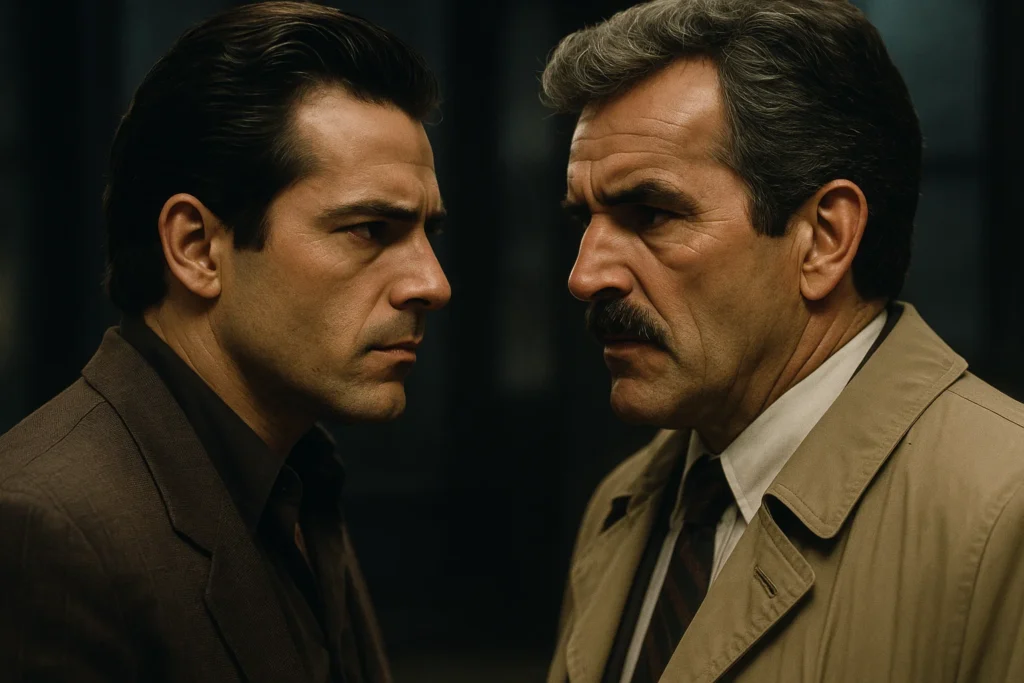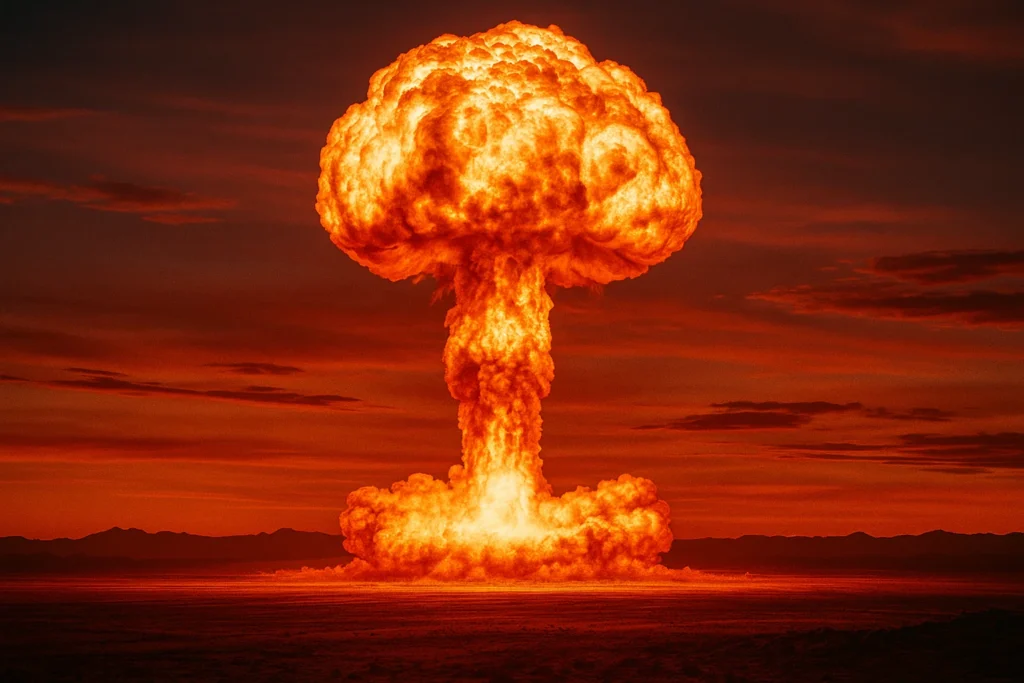
The True Crime Story (1986) Ending isn’t just about how a show concluded. It’s about how an ambitious series collided with the realities of network television in the 1980s, how its creators took risks, and how audiences reacted to a cliffhanger that has never been resolved.
The Premise of Crime Story (1986)
To understand the ending, we need to step back into the world Crime Story created. Airing on NBC from 1986 to 1988, the series stood apart in style and storytelling. It followed Detective Mike Torello (played by Dennis Farina), a hard-nosed Chicago cop, and his lifelong pursuit of Ray Luca (Anthony Denison), a ruthless mobster who rises through organized crime ranks.
The show spanned from the early 1960s to the 1980s, blending historical moments with fictionalized crime sagas. Unlike most TV dramas of its era, Crime Story used a serialized format, meaning each episode carried the story forward, rather than wrapping up neatly in an hour. That approach demanded commitment from viewers but also rewarded them with layered storytelling.
The soundtrack helped define its identity. Instead of a typical TV theme, it opened with Del Shannon’s 1961 hit “Runaway”, a haunting reminder that time and fate were running out for everyone involved. The period detail, the clothes, cars, and music, pulled audiences into a stylized version of America’s crime-ridden underbelly.
Who Was Ray Luca Based On?
Ray Luca wasn’t a real person, but he drew heavily from Chicago’s organized crime figures of the 1960s. Creator Chuck Adamson, a former Chicago police detective, infused Luca with traits from gangsters he had crossed paths with during his career. Luca’s ambition, cruelty, and hunger for power mirrored mobsters like Tony Accardo and Sam Giancana, even if the series fictionalized the details.
That’s part of why the show felt so real, it lived in the gray zone between fact and fiction. Audiences debated whether it was a true story, but in reality, it was inspired by real history rather than recounting exact events. This blurring of fact and fiction gave the show its edge, making Luca terrifying because he felt plausible, even if he wasn’t a direct historical figure.
How Did Crime Story End?
The real question fans keep asking decades later: How did the series Crime Story end?
The answer: with a bang, literally. Season 2 ended in 1988 with Detective Torello and Ray Luca trapped together in Latin America. The setting was tense: they were near a nuclear test site. As the plot built to its climax, a nuclear bomb detonated.
The screen faded to white.
And that was it. No resolution. No aftermath. No answers about whether Torello, Luca, or anyone survived. The story simply stopped, leaving viewers to speculate forever.

The Nuclear Explosion Cliffhanger
The Season 2 finale, “Going Home,” pulled no punches. Luca and Torello, enemies bound by obsession, found themselves caught in the blast of a nuclear test. It was a bold move, shocking in its audacity.
But the cliffhanger was never resolved because NBC canceled the show after that season. The writers never got the chance to bring the characters home, to tie up the decades-long war between cop and mobster.
This left fans angry and bewildered. At a time when audiences couldn’t turn to streaming services, online forums, or fanfiction for closure, the nuclear blast became one of television’s coldest dead ends.
Why Did the Series Get Cancelled?
If the show was so innovative, why did NBC pull the plug? Several reasons contributed:
Low Ratings: Despite its devoted fan base, the serialized format confused casual viewers used to episodic television. Missing a week meant missing key plot developments.
Expensive Production: The show’s attention to period detail, cars, costumes, sets, made it one of the pricier dramas of its time.
Risky Format: Serialized storytelling was ahead of its time. Networks in the 1980s weren’t convinced audiences wanted long, ongoing arcs.
In short, Crime Story was too ambitious for its era. Shows like The Sopranos and Breaking Bad later proved that serialized crime sagas could thrive, but in 1986, the TV ecosystem wasn’t ready.
Was Crime Story Based on True Events?
The question comes up often: Is Crime Story based on a true story?
The answer is complicated. It wasn’t a direct retelling of actual crimes, but it was inspired by real Chicago history. Chuck Adamson’s years in the Chicago Police Department gave him firsthand knowledge of mobsters, cops, and political corruption. He channeled those experiences into the show.
So while Ray Luca never existed, he stood in for many who did. And Torello’s relentless pursuit of justice echoed Adamson’s own experiences fighting crime in a city where the mob’s shadow loomed large.
Audience Reactions to the Ending
For viewers, the ending felt like a betrayal. Imagine following a story for two seasons, investing in the slow burn of a cop-versus-criminal chess match, only to be left with… nothing.
On Reddit, modern viewers who rediscover the show echo the same frustration that fans felt in 1988. Some see the cliffhanger as poetic, two men so locked in battle that their fates were destroyed together in the ultimate symbol of Cold War anxiety. Others simply wish the writers had been given one more episode to resolve the story.
The cancellation turned the finale into legend. It became a cautionary tale about what happens when networks cut stories short, and it cemented Crime Story as a cult favorite rather than a mainstream success.
The Legacy of Crime Story in TV History
Though it ended abruptly, Crime Story left fingerprints on television history. Its serialized storytelling paved the way for shows that demanded viewer loyalty, such as:
NYPD Blue (1993–2005) – Carried serialized police drama into the mainstream.
The Sopranos (1999–2007) – Borrowed heavily from Crime Story’s mix of mob violence and personal drama.
Breaking Bad (2008–2013) – Echoed the concept of a character’s rise to criminal power, not unlike Ray Luca’s arc.
Even stylistically, the use of music, period detail, and gritty realism resonated with future crime dramas. Crime Story showed that television could be cinematic, serialized, and daring, even if audiences weren’t ready to follow.
Why the Ending Still Matters Today
Why are we still talking about the True Crime Story (1986) Ending nearly 40 years later? Because it reflects something bigger than a single show. It’s about unfinished business in storytelling, about what happens when creativity meets corporate decisions.
Viewers crave closure. When a show doesn’t provide it, we carry that unresolved tension with us. In this case, the nuclear blast left endless questions:
Did Torello survive?
Did Luca perish?
Was the explosion symbolic, or literal?
If the show had continued, how would they have written their way out of that moment?
Those unanswered questions are part of what keeps Crime Story alive in memory.
Final Thoughts on the Unfinished Story
The ending of Crime Story is less a conclusion and more a cultural artifact. It embodies the risks and rewards of ambitious storytelling in a medium that wasn’t ready for it.
Was it frustrating? Absolutely. Did it diminish the show’s achievements? Not at all. If anything, the unresolved nuclear blast has become part of the series’ mythos, reminding us of the fragility of television art when ratings and budgets dictate survival.
Nearly four decades later, Crime Story remains a bold, flawed, unforgettable chapter in crime drama history. And its ending, unfinished, explosive, haunting, continues to be discussed because it never gave us what we thought we wanted: closure. Instead, it gave us something else entirely: a reminder that stories, like lives, don’t always end neatly.

Jessica Savitch, with a deep passion for journalism, brings her expertise to istruestory.com as a dedicated author. MA in Arts & Journalism.